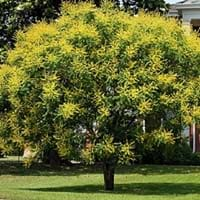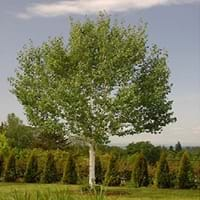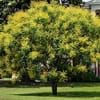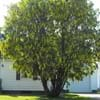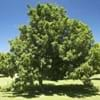Life Span
Perennial
Perennial
Origin
Southern Asia, Southeastern Asia, China
India, Nepal, China
Types
Not Available
Not Available
Habitat
Deciduous forests, Subtropical climates, Tropical regions
Mountains
USDA Hardiness Zone
10-13
5-7
Sunset Zone
H1, H2
3a, 3b, 4, 5, 6, 7, 8, 9, 10, 11, 14, 15, 16, 17
Habit
Oval or Rounded
Pyramidal
Flower Color
Pink, Light Pink, Lavender, Blue Violet
Tan, Brown
Flower Color Modifier
Bicolor
Bicolor
Fruit Color
Sandy Brown, Chocolate
Not Available
Leaf Color in Spring
Green, Light Green
Yellow green
Leaf Color in Summer
Green
Dark Green
Leaf Color in Fall
Red, Green, Copper
Yellow
Leaf Color in Winter
Red, Copper
Not Available
Leaf Shape
Oval to egg shaped
Cordiform
Plant Season
Spring, Summer, Fall
Spring, Summer, Fall, Winter
Sunlight
Full Sun, Partial Sun
Full Sun, Partial Sun
Type of Soil
Loam, Sand
Loam, Sand
The pH of Soil
Acidic, Neutral
Acidic, Neutral
Soil Drainage
Average
Average
Bloom Time
Spring, Late Spring, Early Summer, Summer, Late Summer, Early Fall, Fall
Early Spring
Tolerances
Wet Site
Not Available
Where to Plant?
Ground
Ground
How to Plant?
Seedlings, Spores
Grafting, Stem Cutting
Plant Maintenance
Low
Medium
Watering Requirements
Average Water Needs
Requires watering in the growing season
In Summer
Lots of watering
Average Water
In Spring
Moderate
Moderate
In Winter
Average Water
Average Water
Soil pH
Acidic, Neutral
Acidic, Neutral
Soil Type
Loam, Sand
Loam, Sand
Soil Drainage Capacity
Average
Average
Sun Exposure
Full Sun, Partial Sun
Full Sun, Partial Sun
Pruning
Dispose of diseased portions, Prune before Winter, Prune for shortening long shoots
Remove damaged leaves, Remove dead branches, Remove dead leaves
Fertilizers
Apply 10-10-10 amount, as it is a flowering plant, use high phosphorous content fertilizer
Fertilize in early spring, Fertilize in late fall, slow-release fertilizers
Pests and Diseases
Aphids, Bacteria wilt, Downy mildew
Honey fungus, Leaves with brown tip, Phytophthora Root Rot, Powdery mildew, Verticillium Wilt
Plant Tolerance
Heat Tolerance, Shade areas, Shallow soil, Soil Compaction
Dry Conditions, waterlogging, Wet Site
Flowers
Showy
Insignificant
Flower Petal Number
Single
Not Available
Foliage Texture
Coarse
Medium
Foliage Sheen
Glossy
Matte
Attracts
Birds, Butterflies, Hummingbirds
Not Available
Allergy
allergic conjunctivitis, Anxiety, Red eyes, sneezing, Sore eyes
Not Available
Aesthetic Uses
Bouquets, Cottage Garden, Showy Purposes
Not Used For Aesthetic Purpose
Beauty Benefits
For treating wrinkles, Hair Conditioner, Making cosmetics
Weightloss
Environmental Uses
Air purification, Prevent Soil Erosion, Shadow Tree
Air purification
Medicinal Uses
Detoxification, Hormonal Balancing, Liver problems, Obesity, Regulates Blood Sugar
anti-cancer, anti-inflammatory, antimicrobial, Antioxidants, Antiseptic, Carminative
Part of Plant Used
Leaves
Bark, Leaves
Other Uses
Biomass for fuel, Can be made into a herbal tea, Cosmetics, Making Sweet Scented Oil
Used in construction, Wood is used in construction
Used As Indoor Plant
No
No
Used As Outdoor Plant
Yes
Yes
Garden Design
Feature Plant, Shade Trees, Street Trees
Feature Plant, Shade Trees
Botanical Name
LAGERSTROEMIA speciosa
BETULA utilis
Common Name
Pride-of-India, Queen's crape-myrtle,
Himalayan Birch
In Hindi
जरुल
हिमालय सन्टी
In German
Königinblume
Himalaya-Birke
In French
lilas des Indes, Lagerstroemia speciosa
bouleau de l'Himalaya
In Spanish
Banabá Plant
abedul del Himalaya
In Greek
Lagerstroemia speciosa
Himalayan σημύδας
In Portuguese
Resedá-gigante
bétula Himalaia
In Polish
Lagerstremia wspaniała
Himalayan brzoza
In Latin
Lagerstroemia speciosa
Birch Himalayan
Phylum
Magnoliophyta
Tracheophyta
Class
Magnoliopsida
Magnoliopsida
Family
Lythraceae
Betulaceae
Genus
Lagerstroemia
Betula
Clade
Angiosperms, Rosids
Angiosperms, Eudicots, Rosids
Tribe
Not Available
Not Available
Subfamily
Not Available
Not Available
Number of Species
Not Available
Not Available
Importance of Pride of India and Himalayan Birch
Want to have the most appropriate plant for your garden? You might want to know the importance of Pride of India and Himalayan Birch. Basically, these two plants vary in many aspects. Compare Pride of India and Himalayan Birch as they differ in many characteristics such as their life, care, benefits, facts, etc. Every gardener must at least have the slightest clue about the plants he wants to plant in his garden. Compare their benefits, which differ in many ways like facts and uses. The medicinal use of Pride of India is Detoxification, Hormonal Balancing, Liver problems, Obesity and Regulates Blood Sugar whereas of Himalayan Birch is anti-cancer, anti-inflammatory, antimicrobial, Antioxidants, Antiseptic and Carminative. Pride of India has beauty benefits as follows: For treating wrinkles, Hair Conditioner and Making cosmetics while Himalayan Birch has beauty benefits as follows: For treating wrinkles, Hair Conditioner and Making cosmetics.
Compare Facts of Pride of India vs Himalayan Birch
How to choose the best garden plant for your garden depending upon its facts? Here garden plant comparison will help you to solve this query. Compare the facts of Pride of India vs Himalayan Birch and know which one to choose. As garden plants have benefits and other uses, allergy is also a major drawback of plants for some people. Allergic reactions of Pride of India are allergic conjunctivitis, Anxiety, Red eyes, sneezing and Sore eyes whereas of Himalayan Birch have Not Available respectively. Having a fruit bearing plant in your garden can be a plus point of your garden. Pride of India has no showy fruits and Himalayan Birch has no showy fruits. Also Pride of India is not flowering and Himalayan Birch is not flowering . You can compare Pride of India and Himalayan Birch facts and facts of other plants too.
